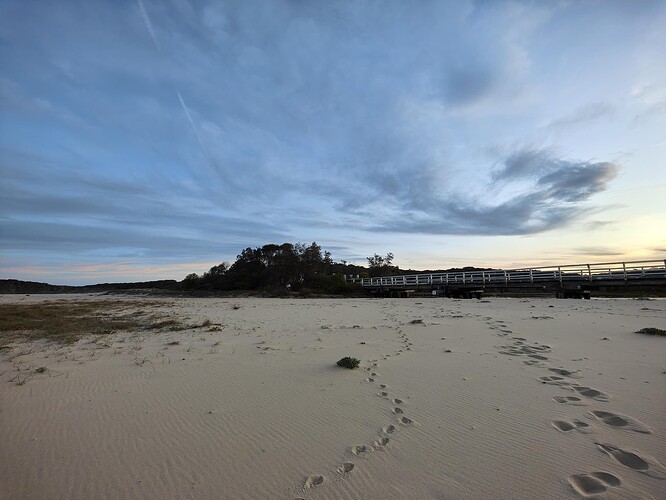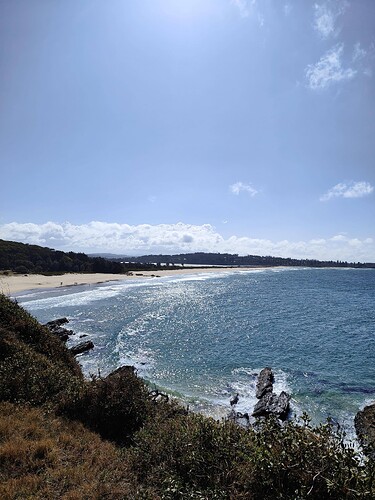I mostly use a low-end 11-year-old Canon snapshot camera, an Elph 110 HS. It’s small enough to leave in my purse until I need it. I also got a brand new phone recently with a really fancy camera in it… but the old Canon beats the new phone in virtually every situation – usually by a wide margin.
There’s no substitute for real optics. A tiny camera phone is limited by physics, and doesn’t get pictures as nice as a full camera with bigger optics. Even a full decade of technological improvements doesn’t change that.
The Elph gets dramatically better pictures in both macro mode and zoom mode, since it’s able to zoom about 5X farther and 5X closer. So it absolutely wipes the floor with the phone camera in both cases. The Elph also gets massively better photos any time the lighting conditions are dark or even just moderate indoor lighting. The Elph seems to get more natural colors most of the time, too.
The only times the phone is competitive at all are in bright lighting, for a distance of ~0.5 to ~2 meters away, or when doing wide-angle landscape photos during the day. It has better HDR without a need for bracketing, which can be useful during the day with both brightly-lit areas and dark shadows in the same image. And if I don’t really need much quality, it can be more convenient since I have the files auto-sync to my computer.
But most of the time, if I care about quality, my cheap old snapshot camera gets much better results than a phone.
For example…
First, “normal” camera mode. This is where the two get the most similar results. The Elph gets richer colors and more detail, but results are otherwise pretty similar.
Top: Elph. Bottom: Phone.

Next, “5X zoom” mode. The Elph’s colors are much more true to how the scene actually looked, and the result is a pretty accurate photo. Meanwhile, the phone washed out the highs, made the shadows darker than reality, changed the hue of almost everything, and blurred out details.
Top: Elph. Bottom: Phone.

The difference is much more clear when looking closer to see the details. Everything in the phone picture is a blur.

What really surprised me was macro mode. I thought the phone would perform well here, especially since it has a special macro mode with its own dedicated separate camera built in for this purpose. It’s one of those 3-eye cameras with multiple different physical cameras that it uses to get better photos in more situations, and one is specifically for macro shots. But this is where the phone performed the worst.
The macro shot was quick and easy with the Elph, but I had to try a bunch of times to get a half-decent photo with the camera… and even then, it doesn’t pick up enough detail to be able to see what I was trying to see.
Left: Elph. Right: Phone.

Note: In all pictures above, no color correction has been performed, and the images are not scaled relative to each other. The only post-processing was to crop the pictures, put them next to each other, and then the combined image pairs have presumably also been scaled to fit on your screen. I did not zoom the Elph macro shot in with software, and I also didn’t zoom the phone macro shot out. That’s just how different the images are in their own native resolutions.
For those with a DSLR camera, the differences would be much more dramatic. My little snapshot camera can’t hold a candle to a proper full-sized camera. However, mine has two big advantages: it’s small and cheap. So I can keep it with me… and the best camera is the one you have with you when you need it.






